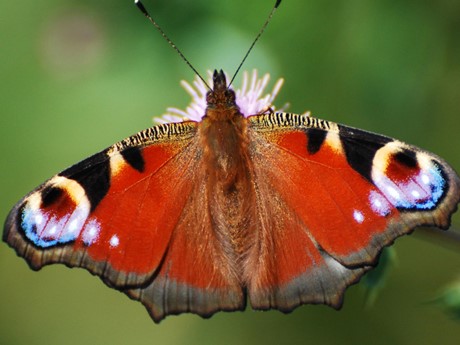A year in the life of a tree
Judith Garforth, 12/12/2019
There are many ‘events’ in a year in the life of a tree. At this time of year deciduous trees are almost bare, with perhaps a few shrivelled leaves still hanging on to the branches. But it won’t be long until the weather warms up and the buds start to swell and burst revealing the fresh green leaves and flowers of spring. Fruits and seeds will ripen over the summer and in autumn the leaves will change colour preparing the tree for winter conditions to come.
Whilst we’re all familiar with these cyclical events, and they’re often used to symbolise the changing seasons, we’re less familiar with their exact timings and what causes them. We don’t yet fully understand how these timings alter with our changing climate and what effect this may have on other wildlife.
The Grantham Oak
This year, the Woodland Trust has decided to follow and document a year in the life of a single tree, and we’d like you to do the same. We’ve chosen ‘The Grantham Oak’. It’s a tree many members of staff pass on the way to work so we can check it regularly. We’ll be looking out for all of the following events:

First autumn tinting

Full autumn tinting

First ripe fruit

First leaves falling

Bare tree

Budburst

First leaf

First flowering
We’ll note the date of each seasonal event as soon as it happens and we’ll record these dates on the Nature’s Calendar website. They go straight into our database which is used by scientists to find out how weather and climate affects timings in nature.
Summer
We started monitoring the Grantham Oak in late summer when the tree was covered in its full size green leaves. It's a very majestic tree and really stands out from it's neighbours; you can't miss it when you drive or walk down the road.

The Grantham Oak (Photo: Charlotte Pattinson)

The Grantham Oak with green summer leaves 29/08/19 (Photo: Charlotte Pattinson)
Autumn
First autumn tinting - 01/10/19
When you look carefully at the branches the first leaves are just starting to turn yellow and brown, although the tree as a whole still looks pretty green.
First leaves falling - 01/10/19
With all the wet and windy weather we've had over the last few days, some leaves have fallen to the ground. It's really starting to feel like autumn.

First autumn tinting 01/10/19 (Photo: Charlotte Pattinson)

First leaves falling 01/10/19 (Photo: Charlotte Pattinson)
Amount of fruit - no fruit
We looked up at the canopy and on the floor beneath the tree but couldn’t find any acorns this year. We gave the tree a fruit score of 1 (no fruit). It will be interesting to see if the oak has a mast year (bumper crop) next year.
First ripe fruit - not possible
We couldn’t record the date that we found our fist ripe acorn because we couldn’t find any acorns at all!
Full autumn tinting - difficult to decide!
Many of the leaves remained green until the end of November. By the time all of the leaves had turned gold or brown, mot of the leaves had fallen to the floor, so we found it really difficult to pinpoint a date for ‘full autumn tinting’ this year.
Winter
Bare tree - 04/12/19
After a few cold nights, with temperatures dropping below freezing, the Grantham Oak was bare and looking very wintry.

Full autumn tinting - but most leaves had already fallen to the ground (Photo: Charlotte Pattinson)

Bare tree 04/12/19 (Photo: Charlotte Pattinson)
We’ll be looking out for budburst and flowering in spring next and will keep this blog updated with new photos as we spot each event happening.
Choose your tree
Can you follow a year in the life of a tree for Nature’s Calendar too? It doesn’t have to be an oak tree. You can choose from lots of trees and shrubs, and you can start following the tree at any time of the year too. Simply choose a mature tree (not a sapling) and visit it regularly (ideally once a week). When you notice a seasonal event happen to your tree, don't forget to record the date on the Nature's Calendar website!
